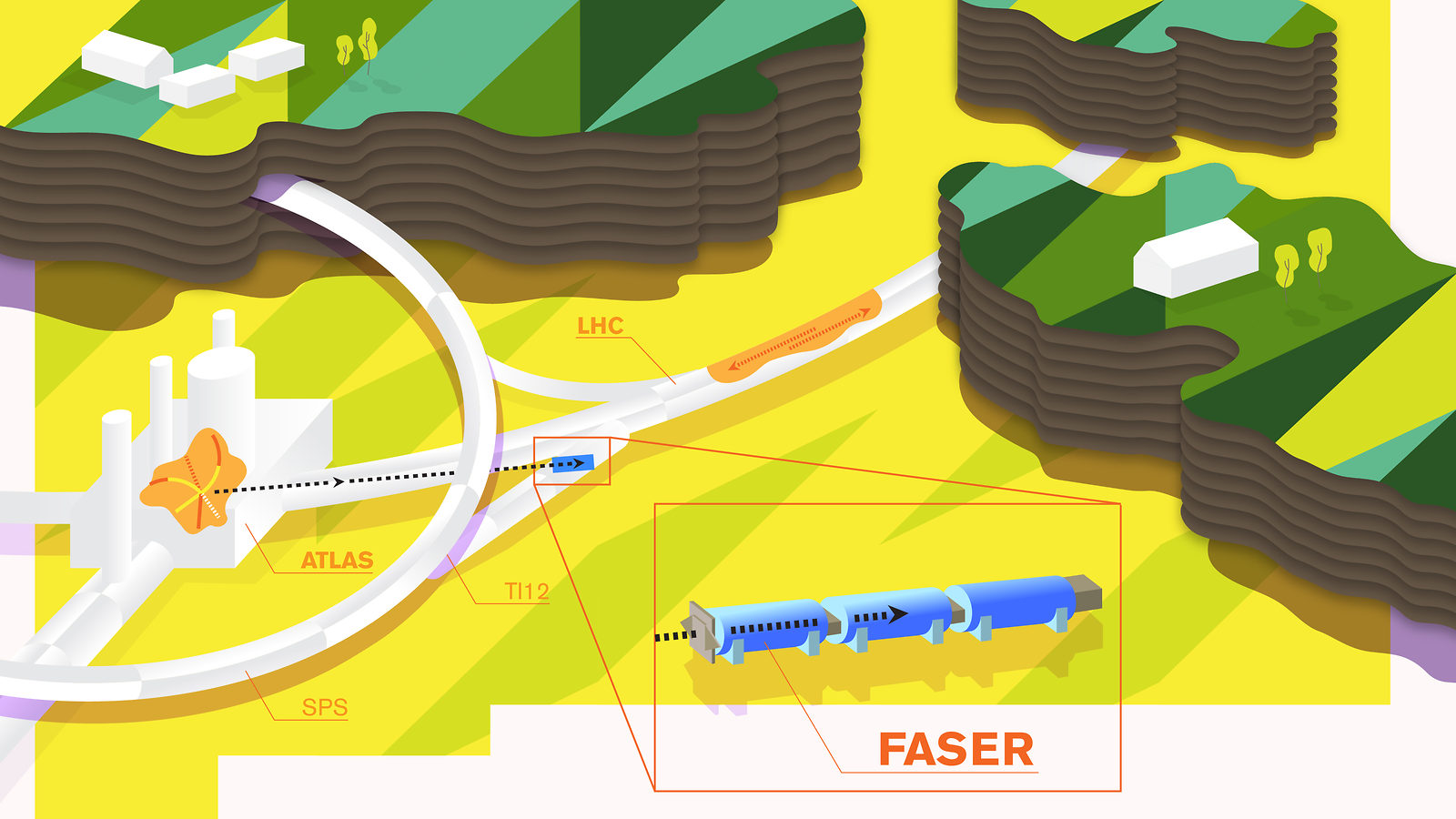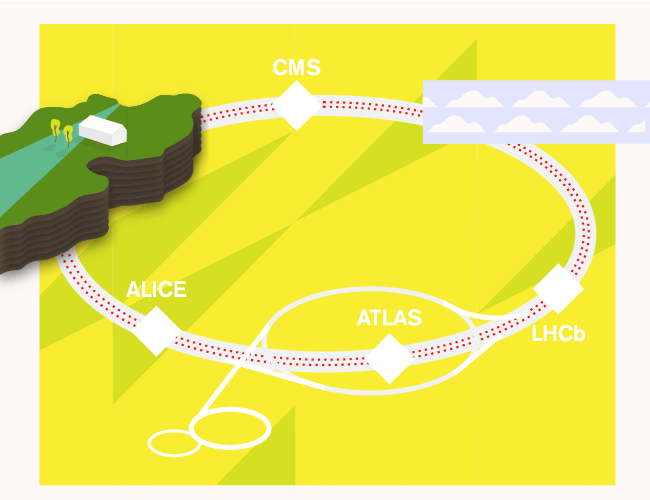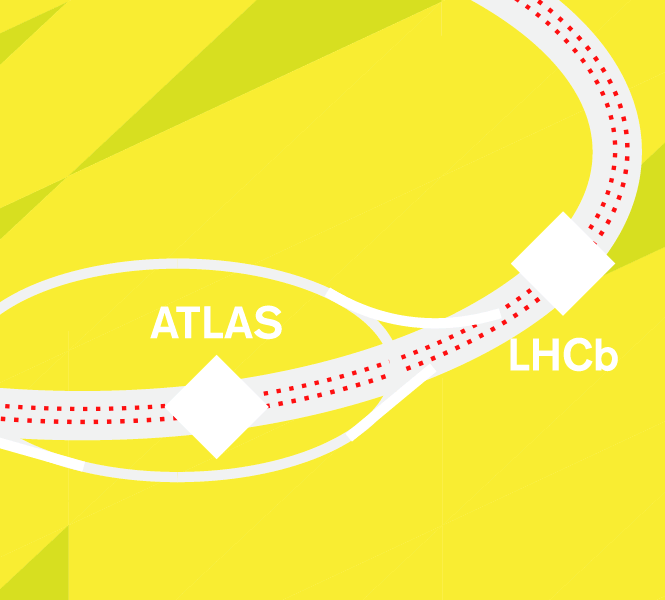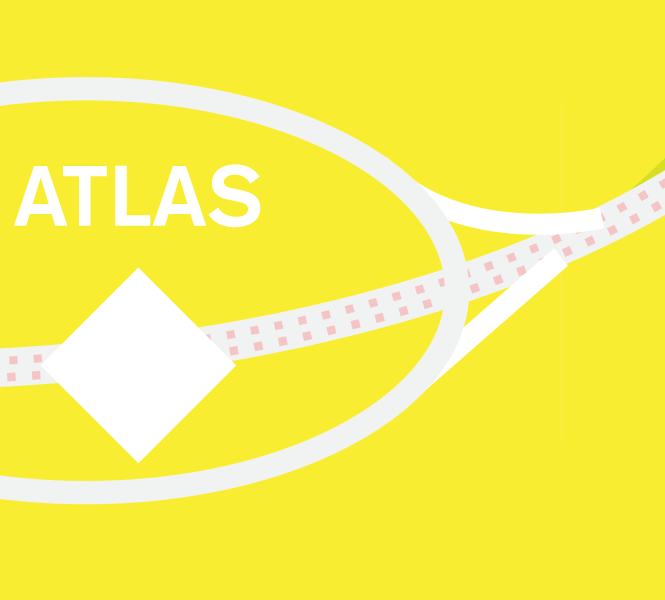Jonathan Feng originally described himself as a high-energy-collider guy, specifically a high-energy-collider theorist. Then a well-placed question at a talk started him on a winding path from colliders to cosmology, from theory to experiment, and finally right back to high-energy physics where he began.
That path led to today, when the CERN Research Board approved the experiment Feng recently co-founded, called FASER, for installation at the Large Hadron Collider.
Let’s start from the beginning. As a graduate student at SLAC National Accelerator Laboratory, Feng was studying supersymmetry, also called SUSY. SUSY predicts the existence of a whole host of massive new particles, which scientists continue to look for with experiments at accelerators like the LHC.
On a fateful visit to Fermi National Accelerator Laboratory, Feng gave a talk about his latest ideas for a model of supersymmetric particles. When he finished and transitioned into questions, someone in the audience pointed out a seemingly significant flaw: The existence of dark matter might have already negated his entire presentation.
“As it turned out the model was okay, but that was really a wake-up call for me,” says Feng, now a professor at UC Irvine. “I realized I better start learning about dark matter and connecting it to supersymmetry.”
Unlike evidence for supersymmetric particles, evidence for dark matter particles has already shown up in scientific observations. We know that dark matter is there because of the gravitational effects it has on galaxies, including our own. In fact, dark matter is five times as prevalent as visible matter and thought to make up the foundations upon which most galaxies are built.
Despite the abundance of dark matter in the universe, scientists have not yet been able to directly observe it. They think that's because, other than through the force of gravity, dark matter rarely interacts with normal matter.
For decades, scientists have searched for dark matter particles like this, ones that interact only weakly with known particles. One type of weakly interacting massive particles, called WIMPs, has a possible connection with supersymmetry.
Like dark matter particles, SUSY particles could also be weakly interacting and massive, a fact that makes theorists wonder if dark matter particles are SUSY particles. Feng in particular was intrigued by the fact that the predicted number of SUSY particles left over from the Big Bang and the number required to account for all the dark matter in the universe were essentially the same.
Suddenly, instead of negating models of supersymmetry, dark matter was bolstering them.
“It’s just an amazing coincidence,” Feng says. “I still think that it’s almost too good to not be relevant to nature.”
Feng spent the next 10 years focused on popularizing this coincidence, which supported theories behind the search for WIMPs. But as time went on and WIMPs continued to prove elusive, Feng grew restless. In 2008, he began also focusing on other possibilities.
One such possibility was a different kind of weakly interacting particle—this one light, not massive. Such a dark matter particle would be even more difficult to detect than a WIMP. But it could be that there are other particles, called portal particles, that could be the bridge between normal matter and this light dark matter. Portal particles would be capable of communicating with both, and they would be easier to detect than dark matter particles.
These portal particles could be produced in the decays of light particles like pions or kaons. As Feng and three postdocs thought about where to look for portal particles in 2017, they realized there’s a place where the pions and kaons they might come from are produced in droves: the LHC.
Every second, millions of protons are collided in the LHC. The energy from those collisions transforms the protons into a multitude of other particles. Those particles then speed off in all directions.
The LHC’s huge experiments are built to surround the places where the particle beams collide to give them the best chance of catching these particles. But Feng’s team realized that the LHC detectors had an important blind spot: straight down the beam pipes.
The LHC beam pipes travel in a circle, not a straight line. Magnets turn the beams of particles inside them at a very, very slight angle so that they can travel around in a ring over and over and potentially collide at four locations.
A portal particle coming from a kaon or pion created in a particle collision at the LHC would be neutral and therefore unaffected by the magnetic field, so it would continue in a straight line as the rest of the beam curved away. At a distance of 500 meters, the escaping particles would have spread out only 7 centimeters from one another, making it possible for a detector as small as a sheet of paper to catch almost all of them.
Feng and postdocs Iftah Galon, Felix Kling and Sebastian Trojanowski pulled out a map of CERN and traced a straight line from the collision point inside the ATLAS detector. Just in the spot where the portal particles would appear, they found a tunnel, TI12, left over from the LEP collider that had previously inhabited the LHC’s underground home.
“That was really exciting,” says Galon, postdoctoral associate at the New High Energy Theory Center at Rutgers University. Suddenly, the idea to detect particles that had potentially been escaping the LHC for years unnoticed by the gigantic detectors around them wasn’t just a fantasy, “it was actually feasible.”
In August of 2017, Feng and his postdocs excitedly published a paper proposing a new experiment, pointing out this unused tunnel as the perfect location. They called it FASER, a slightly forced acronym for ForwArd Search ExpeRiment at the LHC. They expected an experimentalist to jump on the idea within a few weeks, a month at the most.
By the time two months had passed, Feng says he realized that wasn’t going to happen.
Instead of being deterred, Feng, Galon, Kling and Trojanowski continued reaching out to their contacts and giving talks about FASER. If they couldn’t inspire the experimentalists to take on their idea, they were going to have to get involved themselves.
In February of 2018, Feng met a CERN research physicist named Jamie Boyd.
“That was the big break, when Jamie got wind of this and got on board,” Feng says. “He’s been extraordinarily effective at putting together the experimental side of FASER.”
Before the LHC even started producing collisions, Boyd was working on ATLAS, one of the two largest experiments at LHC. For over 10 years, he cultivated relationships and experience, making him the perfect person to campaign for FASER.
He also realized that FASER would need help from other experiments.
“With any experiment, you create a number of back-up parts,” Boyd says. These back-ups are kept around in case something happens to the main equipment. Instead of halting the entire experiment, scientists can simply replace faulty parts and continue taking data. Boyd realized that a few of the many copies of back-up parts created early on for ATLAS and LHCb could safely be donated to FASER instead.
“Other experiments’ generous contributions is partially why FASER could get off the ground so quickly,” he says.
Somewhat unusually for a group of theorists, Feng, Galon, Kling and Trojanowski became founding members of the FASER experiment, with Feng and Boyd serving as co-spokespersons.
From there, things came together at a whirlwind pace. In July they had a conceptual design and a collaboration of 14 people. In October, the ATLAS and LHCb collaboartaions donated essential parts. In November, their team had jumped up to 25 people and had produced a technical design to propose to CERN. In Febraury, they secured full funding for construction from the Heising-Simons and Simons Foundations. And on March 5, the group received the final go ahead from the CERN Research Board to integrate FASER into the LHC schedule.
The LHC is down for upgrades until late 2020, so FASER will need to be built, tested, installed and ready for operation by then.
“We have a very clear and very hard deadline,” Boyd says. “Because FASER is small, the LHC won’t stop its beam to wait for us. We have to match the beam shutdown schedule, not the other way around.”
FASER’s main purpose is to detect portal particles produced by the LHC, but it also stands to provide other important insights. It could find heavy versions of hypothetical particles called axions. Less massive versions of axions are dark matter candidates, but the axions FASER could detect would be too heavy and unstable to be dark matter.
“We look at the world, we look at physics, and we ask ourselves where new physics could be hiding,” Galon says. “If FASER finds any new particles, then we’ve done our job correctly.”
FASER could also catch neutrinos, other weakly interacting particles that scientists already know about but have yet to directly observe in detectors at the LHC. This would provide scientists with an opportunity to study a previously unexplored energy range of neutrinos and test our current understanding of how neutrinos interact.
FASER scientists expect to have data to analyze starting in 2021 and hope to make significant contributions to physics by the end of their first three-year run.











